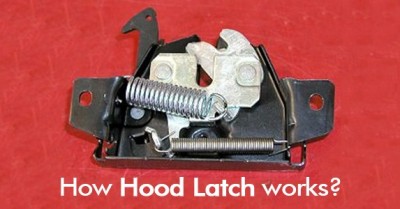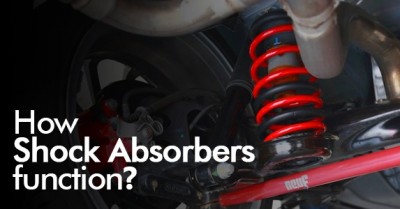How Does Shock Absorbers Function?

Whenever any vehicle’s power is considered, the majority of the people think of the engine capacity or horsepower. But this power would have been wasted without an effective suspension system.
Shock absorbers in automobiles are also a part of the suspension system. It is also known as a damper or a snubber. The shock absorbers dampen the compression and the recoil of the springs; thus, keeping the car in contact with the road.
All the comfort you have while driving the car is due to the car shock absorbers. It further ensures steering stability giving you further control while driving.
So let’s have a look at Shock Absorber’s work and know more about it...

How do Car Shock Absorbers work?
The complete functioning of the shock absorbers is all based on physics laws of motion and energy. We already know that energy can only be conserved and can not be created or destroyed.
Considering this, whenever the car goes through the irregular parts of roads, such as the speed breakers, the shock absorber, and the suspension system come into play.
The shock absorber is a hydraulic system that grasps the kinetic energy of a suspension system that is then dispelled in the atmosphere in the form of thermal energy. This conversion of kinetic energy into thermal energy is the cause of spring dampening.

In a bit detail:
Car shock absorbers are cylinders containing oil. When the suspension functions, the piston moves through the oil-filled cylinder. The piston’s upwards and downwards movement forces some fluid particles to enter the piston head.
The amount of liquid forced out restricts the movement of the springs, eventually creating a dampening effect. Also, shock absorbers can judge the speed at which a vehicle operates.
Therefore, shock absorbers adjust the hindrance offered by determining the spring’s compression and rebound speed.
Two Common Types of Shock Absorbers in Automobiles:
The functioning of shock absorbers doesn’t differ, but the automobiles of different makes can have different types of absorbers that do differ in some way or another.
The two most commonly found shock absorbers are the MacPherson strut and telescopic ones.
Strut-Type Shock absorber:
These shock absorbers are mostly found in the front suspension of vehicles. These sorts of absorbers are connected between the body and the steering knuckle of the automobile.
The steering knuckle is further connected with a lower arm. This only enables vertical displacement of the strut shock absorber. The structure of a steering knuckle minimizes the turning range of a wheel.
The strut assembly consists of a struct shock absorber, a coiled spring, strut mount, and spring isolators. It also has a dust boot on a piston to prevent the disruption of oil holes.
In case of your car is acting as a bouncing ball, then strut units can be replaced, or its components can be repaired.
An additional note: These absorbers are hydraulic oil systems, but they use gas to prevent oil foaming during quick dampening.
Telescopic shock absorber:
The telescopic shock absorbers can be used for both front and rear suspension systems. The telescopic system consists of the cylinder connected with the head at the open mouth. The head is further linked with an outer reservoir that bridges the axle.
The cylinder has a couple of valve systems, one connected at the bottom and the other with the piston. Both of these valves have tiny holes that are further covered with disc valves.
Moreover, there’s a gland on the head of the system that restricts the leakage of fluid while the piston moves.
Additionally, it is preferred to replace the telescopic units rather than repair them. So, in case of replacements, look for authentic auto parts manufacturers.
Which One is Better: Oil-Filled Shock Absorbers or Gas-Filled Ones?
Oil-filled Shock Absorbers
- Only oil is used, such as telescopic absorbers.
- Heat tolerance: low
- It can’t prevent oil foaming.
- No effect by the atmospheric conditions.
- Operational cost: low
- Maintenance isn’t complex.
- The dampening output is average.
Gas-filled Shock Absorbers
- Both oil and gas are used, such as strut absorbers.
- Heat tolerance: high
- The gas, such as nitrogen, is for the purpose to avert oil foaming.
- Atmospheric conditions can affect the system.
- Operational cost: high due to nitrogen gas.
- Maintenance is a bit complex.
- Highly effective to curb the bounce while going through uneven surfaces.
Conclusion:
As an automobile driver or even a passenger, you’ll indeed love to have a safe ride rather than having the feel of a park ride or the bounce house. Well, bounce houses feel smoother, but the sudden vehicle bounce won't be that good.
It’s really important that your automobile’s shock absorber is effective for dampening the springs so that you can evade accidental injuries.
So keep yourself secure and enjoy the ride while integrating an efficient shock absorber.





















Comments (0)